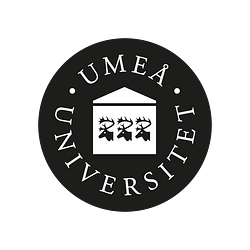Press release -
Superelastic and zigzag-shaped protein structures provide adhesion capacity to antibiotic-resistant bacteria
Umeå University researchers have participated in an international collaboration that has revealed the molecular structure and mechanism in the formation of a special and previously unknown type of zigzag-shaped pili structure that is found on the bacterium Acinetobacter baumannii. The new findings are published in the journal Nature.
Antibiotic-resistant bacteria of the species Acinetobacter baumannii have become a global health threat that causes many serious and life-threatening infections, especially among patients in hospital environments and other health care. The bacterium is ranked by the WHO as the highest priority ("Priority 1: CRITICAL") when it comes to the need for new antibiotics and the development of alternative means to counteract the infections.
Adhesion to various types of surfaces through the production of pili, filaments of protein polymers on its surface, is one of the properties of the bacterium that greatly contributes to its ability to establish itself in hospital environments and to colonize various tissues that can lead to infection. Csu pili of A. baumannii belongs to a group of pili, "archaic chaperone-usher pili" which occurs in many different bacterial species but its molecular structure has been unknown. An international collaboration led by Professor Anton V. Zavialov at the University of Turku, Finland, has now clarified the molecular structure of Csu pili and how its special superelastic zigzag structure is formed.
By combining molecular biology methodology with high-resolution microscopy and various nanotechnologies (Atomic Force Microscopy, Cryo-EM, Optical Tweezers), the collaborating researchers at University of Turku, California Institute of Technology, Uppsala University, and Umeå University have characterized both structure and dynamics at Csu pili. They discovered that Csu pili have a conceptually new zigzag-shaped structure that lead to superelastic properties.
“The characterization of the structure of Csu pili and of the mechanism by which they are formed, where a particular “clinch” mechanism is involved, are important contributions in our efforts to find new ways to influence and prevent the bacteria's chances of causing infection and disease. We already have suggestions on how the new findings should be used to develop new strategies to counteract infection” - comments Professor Bernt Eric Uhlin at the Department of Molecular Biology, Umeå University. A postdoctoral coworker, Dr. Si Lhyam Myint, also participated in the collaboration and, with support mainly from the Kempe Foundations and the Swedish Research Council, Uhlin´s laboratory is conducting molecular infection medicine research on Acinetobacter baumannii and other bacteria.
“Measurements of the biomechanical properties of Csu pili with our force-measuring optical tweezers show that they have a structure that gets superelastic properties, a property that has been observed for the first time with macromolecules. The unique properties of these pili lead to a number of new interesting questions when we want to understand how they work in their role as an attachment mechanism for the bacteria " - explains senior lecturer Magnus Andersson at the Department of Physics, Umeå University, where he is leader of the Biophysics and Biophotonics group that develops optical tweezers. The measurements were conducted by recently defended doctoral student Tobias Dahlberg and the project has financial support from, among others, the Kempe Foundations and the Swedish Research Council.
Corresponding author:
Anton V. Zavialov
E-post: antzav@utu.fi
Tel: +358-505 391396
Contacts at Umeå University:
Magnus Andersson
E-mail: magnus.andersson@umu.se
Tel: +46-70-6460602
Bernt Eric Uhlin
E-mail: bernt.eric.uhlin@umu.se
Tel: +46-70-6757344
Related links
Topics
Categories
Umeå University
Umeå University is one of Sweden’s largest institutions of higher education with over 36,000 students and 4,000 faculty and staff. The university is home to a wide range of high-quality education programmes and world-class research in a number of fields. Umeå University was also where the revolutionary gene-editing tool CRISPR-Cas9 was discovered that has been awarded the Nobel Prize in Chemistry.
At Umeå University, distances are short. The university's unified campus encourages academic meetings, an exchange of ideas and interdisciplinary co-operation, and promotes a dynamic and open culture in which students and staff rejoice in the success of others.

